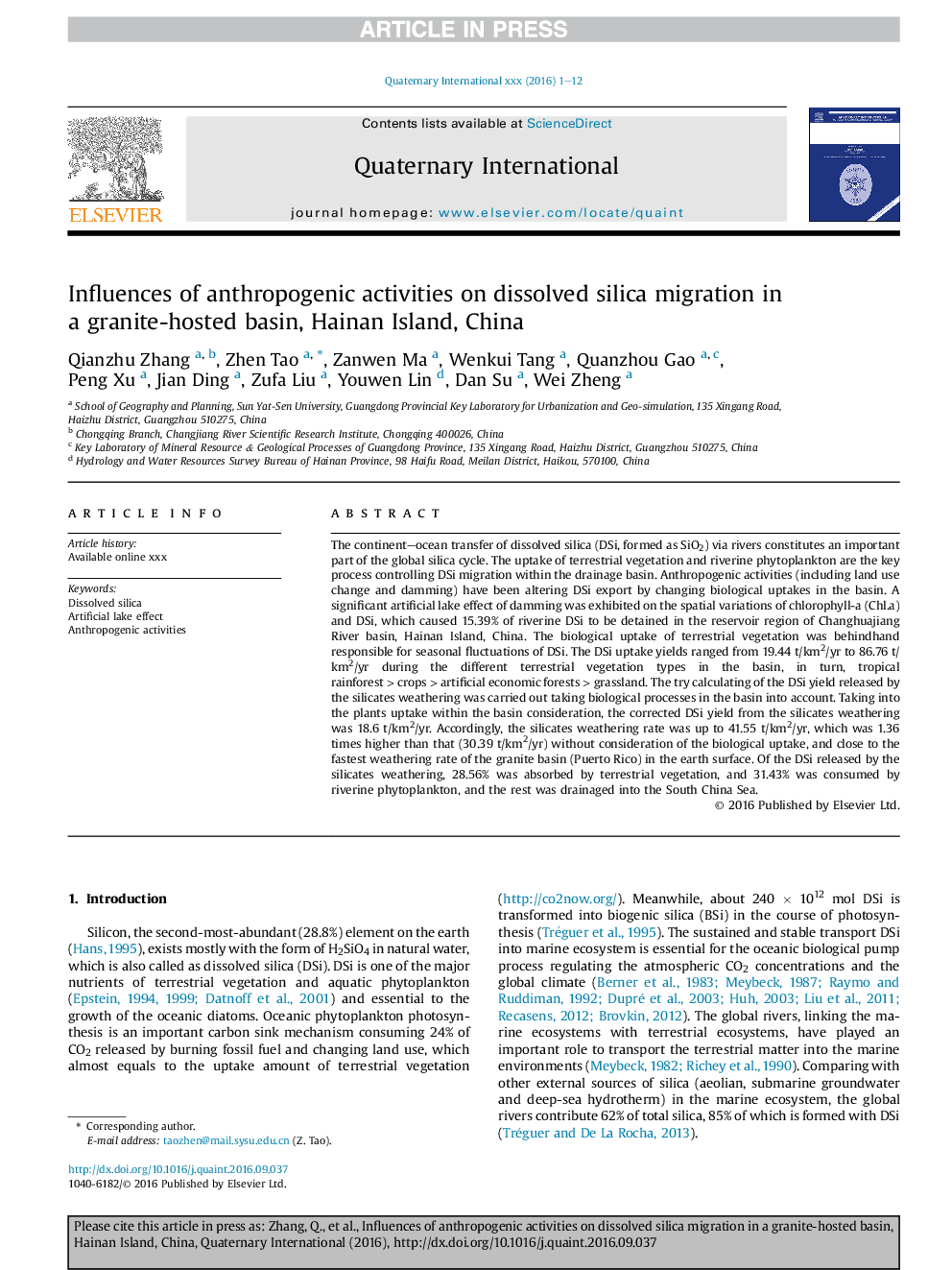| Article ID | Journal | Published Year | Pages | File Type |
|---|---|---|---|---|
| 5113084 | Quaternary International | 2017 | 12 Pages |
Abstract
The continent-ocean transfer of dissolved silica (DSi, formed as SiO2) via rivers constitutes an important part of the global silica cycle. The uptake of terrestrial vegetation and riverine phytoplankton are the key process controlling DSi migration within the drainage basin. Anthropogenic activities (including land use change and damming) have been altering DSi export by changing biological uptakes in the basin. A significant artificial lake effect of damming was exhibited on the spatial variations of chlorophyll-a (Chl.a) and DSi, which caused 15.39% of riverine DSi to be detained in the reservoir region of Changhuajiang River basin, Hainan Island, China. The biological uptake of terrestrial vegetation was behindhand responsible for seasonal fluctuations of DSi. The DSi uptake yields ranged from 19.44 t/km2/yr to 86.76 t/km2/yr during the different terrestrial vegetation types in the basin, in turn, tropical rainforest > crops > artificial economic forests > grassland. The try calculating of the DSi yield released by the silicates weathering was carried out taking biological processes in the basin into account. Taking into the plants uptake within the basin consideration, the corrected DSi yield from the silicates weathering was 18.6 t/km2/yr. Accordingly, the silicates weathering rate was up to 41.55 t/km2/yr, which was 1.36 times higher than that (30.39 t/km2/yr) without consideration of the biological uptake, and close to the fastest weathering rate of the granite basin (Puerto Rico) in the earth surface. Of the DSi released by the silicates weathering, 28.56% was absorbed by terrestrial vegetation, and 31.43% was consumed by riverine phytoplankton, and the rest was drainaged into the South China Sea.
Related Topics
Physical Sciences and Engineering
Earth and Planetary Sciences
Geology
Authors
Qianzhu Zhang, Zhen Tao, Zanwen Ma, Wenkui Tang, Quanzhou Gao, Peng Xu, Jian Ding, Zufa Liu, Youwen Lin, Dan Su, Wei Zheng,
